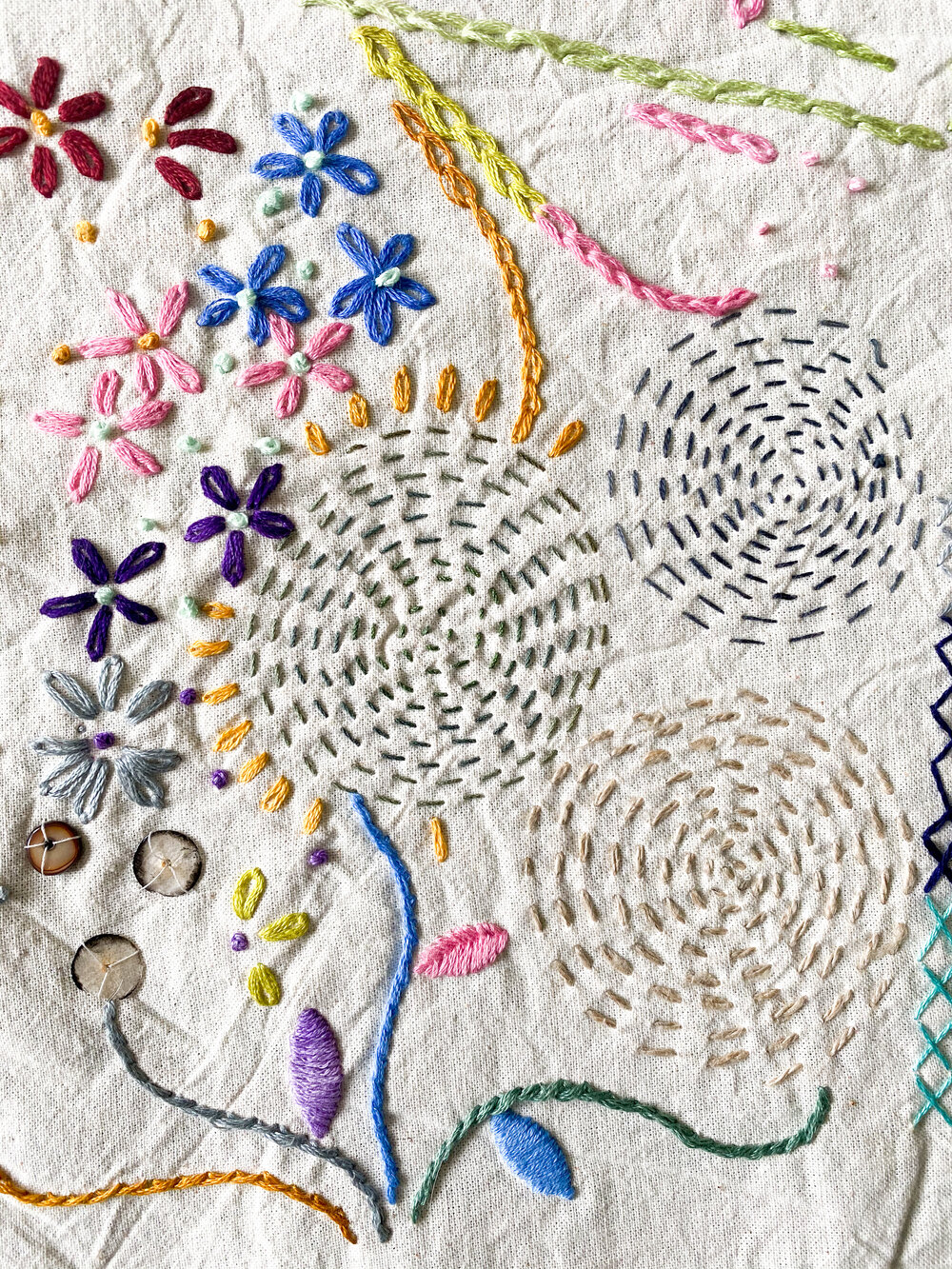Stitching zen circles
May 15, 2020
Cover image: Embroidery by Kate Ward
Stitching circles is a form of meditation. There is very little need to plan, as you start from a central spot, and you sew in concentric circles around this place.
Focusing on the action of the hand, as it sews through the fabric allows the mind to wander, often in the form of a reverie, allowing for the mind to get lost in thought. It is also a great way to practice mindfulness, as you focus on the tactile feelings of the fabric, and listen to the soothing sounds of the thread as it passes through the fabric.
Studies have revealed that there is a therapeutic benefit to working with textile techniques (knitting, weaving etc) that generate the ‘relaxation response’. This is a measurable state that introduces a feeling of calm and is characterised by lowered blood pressure, heart rate and muscle tension.

Embroidery by Kate Ward
Sewing circular motifs can encourage you to enter into ‘the flow’, a creative state where you are fully engaged with a task. The rhythm of the hand stitch engages the flow, and quite often the process is more important than the end result. This pace can lead to a measured way of thinking and meaning can emerge from the making process.
Universally, the circle is a symbol that represents notions of totality, wholeness, original perfection, the Self, infinity, eternity, and the cosmic rhythms of the universe. It can symbolize enlightenment, strength, elegance, the universe, and the void.

Enso circle by Thoth Adan
According to Zen philosophy and practice, the circle is the symbol supreme of Buddhist enlightenment. Enlightenment has been compared to the “bright full moon” and a “great round mirror.”
Drawing a circle (ensō) is a disciplined-creative practice of Japanese ink painting—sumi-e. Usually, a person draws the ensō in one fluid, expressive, swift brush stroke. Once the ensō is drawn, one does not change it and it is believed that this shows the character of its creator and the context of its creation in a brief, continuous period of time. The circle may be open or closed depending on the nature of the practitioner. If the circle is open it may refer to movement and development as well as the imperfection of all things. Zen practitioners relate this to the idea to wabi-sabi, the beauty of imperfection. When the circle is closed, it represents perfection and completion.
Drawing ensō is a spiritual practice that may be undertaken on a regular basis. This spiritual practice of drawing ensō for self-realization is called hitsuzendō (筆禅道, "way of the brush"). Ensō exemplifies the various dimensions of the Japanese wabi-sabi perspective and aesthetic: asymmetry, irregularity, simplicity, weathered, natural, graceful, free and tranquil.
If you would like to know more about mindfulness and mending, sign up to my newsletter here.
Further Reading
Slow Stitch by Claire Wellesley-Smith

